Related Research Articles

Asheboro is a city in and the county seat of Randolph County, North Carolina, United States. The population was 25,012 at the 2010 census. It is part of the Greensboro–High Point Metropolitan Area of the Piedmont Triad and is home of the state-owned North Carolina Zoo.

A plantation is an agricultural estate, generally centered on a plantation house, meant for farming that specializes in cash crops, usually mainly planted with a single crop, with perhaps ancillary areas for vegetables for eating and so on. The crops that are grown include cotton, cannabis, coffee, tea, cocoa, sugar cane, opium, sisal, oil seeds, oil palms, fruits, rubber trees and forest trees. Protectionist policies and natural comparative advantage have sometimes contributed to determining where plantations are located.

Intensive agriculture, also known as intensive farming, conventional, or industrial agriculture, is a type of agriculture, both of crop plants and of animals, with higher levels of input and output per unit of agricultural land area. It is characterized by a low fallow ratio, higher use of inputs such as capital and labour, and higher crop yields per unit land area.

Hemp, or industrial hemp, is a botanical class of Cannabis sativa cultivars grown specifically for industrial or medicinal use. It can be used to make a wide range of products. Along with bamboo, hemp is among the fastest growing plants on Earth. It was also one of the first plants to be spun into usable fiber 50,000 years ago. It can be refined into a variety of commercial items, including paper, rope, textiles, clothing, biodegradable plastics, paint, insulation, biofuel, food, and animal feed.
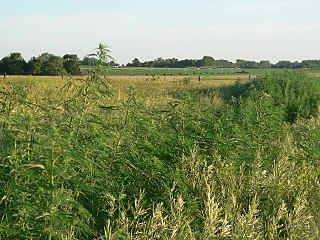
Feral cannabis, or wild marijuana, is wild-growing cannabis generally descended from industrial hemp plants previously cultivated for fiber, with low or negligible amounts of psychoactive tetrahydrocannabinol (THC).
Alex White Plume is the former vice president and president of the Oglala Sioux Tribe of the Pine Ridge Reservation, located on South Dakota of the United States. He served as president from June 30, 2006 to November 2006 after Cecilia Fire Thunder was impeached.

North Carolina Highway 42 (NC 42) is a primary state highway in the U.S. state of North Carolina and a semi-urban traffic artery connecting Asheboro, Sanford, Clayton, Wilson and Ahoskie as well as many small- to medium-sized towns throughout Central and Eastern North Carolina. The highway is primarily rural, avoiding larger cities such as Raleigh. NC 42 begins at I-73/I-74/US 220 on the western side of Asheboro. From there the highway runs southeast toward Sanford. Running through the heart of Sanford, NC 42 intersects several major highways such as US 1 and US 421. Leaving Sanford the highway runs along the southern side of the Triangle Area, while servicing the smaller towns of Fuquay-Varina and Clayton. Further east the highway intersects both I-95 and US 264, shortly before entering central Wilson. Leaving Wilson the highway continues to the northeast, and intersects US 258 near Crisp. North of intersecting US 64, NC 42 begins a concurrency with NC 11 from Hassell to western Ahoskie. Nearing Ahoskie the highway turns to the east and runs south of the center of the town. NC 42 follows concurrently with US 13 southeast to Powellsville. Nearing its eastern terminus the highway turns east along its own routing until reaching NC 45 in Colerain where the highway ends. NC 42 is the third longest state highway in the U.S. state of North Carolina.
The North Carolina News Network is a news and information service established in 1942. It provides programming to approximately 75 radio stations, primarily in the state of North Carolina, and can also be heard by Internet streaming via its website.
The Aberdeen and Asheboro Railroad (A&A), known locally as "Page's Road," was the conglomeration of two previous railroads built by the Page family of Aberdeen, North Carolina, at the turn of the 20th century. The railroad ran 56 miles (90 km) to connect its namesake cities with a 20.75-mile long (33.39 km) branch connecting Biscoe to Troy and Mount Gilead and another branch connecting West End to Jackson Springs.
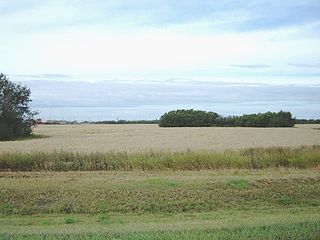
Agriculture in Saskatchewan is the production of various food, feed, or fiber commodities to fulfill domestic and international human and animal sustenance needs. The newest agricultural economy to be developed in renewable biofuel production or agricultural biomass which is marketed as ethanol or biodiesel. Plant cultivation and livestock production have abandoned subsistence agricultural practices in favor of intensive technological farming resulting in cash crops which contribute to the economy of Saskatchewan. The particular commodity produced is dependent upon its particular biogeography or ecozone of Geography of Saskatchewan. Agricultural techniques and activities have evolved over the years. The first nation nomadic hunter-gatherer lifestyle and the early immigrant ox and plow farmer proving up on his quarter section of land in no way resemble the present farmer operating huge amounts of land or livestock with their attendant technological mechanization. Challenges to the future of Saskatchewan agriculture include developing sustainable water management strategies for a cyclical drought prone climate in south western Saskatchewan, updating dryland farming techniques, stabilizing organic definitions or protocols and the decision to grow, or not to grow genetically modified foods. Domestically and internationally, some commodities have faced increased scrutiny from disease and the ensuing marketing issues.
The Industrial Hemp Farming Act of 2009, introduced during the 111th United States Congress by House Republican Ron Paul of Texas) and House Democrat Barney Frank of Massachusetts) on April 2, 2009, sought to clarify the differences between marijuana and industrial hemp as well as repeal federal laws that prohibit cultivation of industrial, but only for research facilities of higher education from conducting research. Industrial hemp is the non-psychoactive, low-THC, oil-seed and fibers varieties of, predominantly, the cannabis sativa plant. Hemp is a sustainable resource that can be used to create thousands of different products including fuel, fabrics, paper, household products, and food and has been used for hundreds of centuries by civilizations around the world. If H.R.1866 passes American farmers will be permitted to compete in global hemp markets. On March 10, 2009, both Paul and Frank wrote a letter to their Congressional colleagues urging them to support the legislation. This bill was previously introduced in 2005 under the title of Industrial Hemp Farming Act of 2005.

James Richardson Comer Jr. is an American politician from the Commonwealth of Kentucky who represents the commonwealth's 1st congressional district in the United States House of Representatives. As the chair of the Oversight Committee from 2023, Comer started investigations into President Joe Biden and his family.
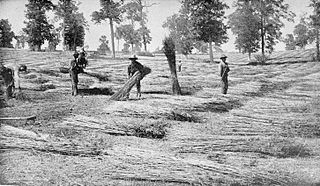
Kentucky was the greatest producer of hemp in the United States during the 19th and 20th centuries, when it was the source of three fourths of U.S. hemp fiber. Production started to decline after World War I due to the rise of tobacco as the cash crop in Kentucky and the foreign competition of hemp fibers and finished products. In 1970, federal policies virtually banned the production of industrial hemp during the War on Drugs saying all Cannabis sativa is a Schedule I controlled substance. Federal law under the Agricultural Act of 2014 allowed research back into hemp. Kentucky began production again with 33 acres in 2014. As of the 2016 harvest season, only two U.S. states other than Kentucky had over 100 acres (40 ha) in hemp production: Colorado and Tennessee. The first 500-acre commercial crop was planted in Harrison County in 2017, and research permits were issued for over 12,000 acres (4,900 ha) that year. The 2016 documentary Harvesting Liberty concerns the 21st century Kentucky hemp industry.
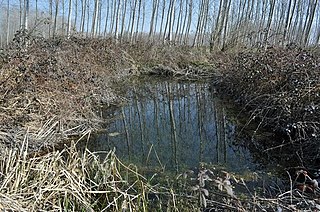
The cultivation of cannabis in Italy has a long history dating back to Roman times, when it was primarily used to produce hemp ropes, although pollen records from core samples show that Cannabaceae plants were present in the Italian peninsula since at least the Late Pleistocene, while the earliest evidence of their use dates back to the Bronze Age. The mass cultivation of industrial cannabis for the production of hemp fiber in Italy really took off during the period of the Maritime Republics and the Age of Sail, and continued well after the Italian Unification, only to experience a sudden decline during the second half of the 20th century, with the introduction of synthetic fibers and the start of the war on drugs, and only recently it is slowly experiencing a resurgence.
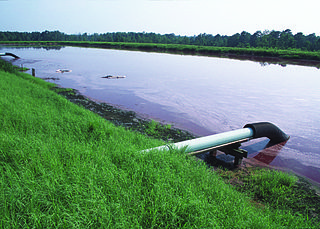
The environmental impact of pig farming is mainly driven by the spread of feces and waste to surrounding neighborhoods, polluting air and water with toxic waste particles. Waste from pig farms can carry pathogens, bacteria, and heavy metals that can be toxic when ingested. Pig waste also contributes to groundwater pollution in the forms of groundwater seepage and waste spray into neighboring areas with sprinklers. The contents in the spray and waste drift have been shown to cause mucosal irritation, respiratory ailment, increased stress, decreased quality of life, and higher blood pressure. This form of waste disposal is an attempt for factory farms to be cost efficient. The environmental degradation resulting from pig farming presents an environmental injustice problem, since the communities do not receive any benefit from the operations, and instead, suffer negative externalities, such as pollution and health problems. The United States Agriculture and Consumer Health Department has stated that the "main direct environmental impact of pig production is related to the manure produced.
The Hemp Inc. mill in Spring Hope, North Carolina is the largest industrial hemp processing facility in the United States. It is on North Carolina Highway 581.
The Hemp Farming Act of 2018 was a proposed law to remove hemp from Schedule I controlled substances and making it an ordinary agricultural commodity. Its provisions were incorporated in the 2018 United States farm bill that became law on December 20, 2018.
Hemp in Washington State has emerged as an experimental crop in the 21st century.

The 2018 farm bill or Agriculture Improvement Act of 2018 is an enacted United States farm bill that reauthorized $867 billion for many expenditures approved in the prior farm bill. The bill was passed by the Senate and House on December 11 and 12, 2018, respectively. On December 20, 2018, it was signed into law by President Donald Trump.

Hemp in the United States was a legal crop in the 18th and 19th centuries. Production was effectively banned in the mid-20th century, but it returned as a legal crop in the 21st century. By 2019, the United States had become the world's third largest producer of hemp, behind China and Canada.
References
- ↑ Saunders 1963, p. xxx.
- ↑ Yarnell 1998, p. 8.
- ↑ A.J. Herrington (September 25, 2017), "North Carolina Is Harvesting Its First Legal Hemp Crop in Decades", High Times
- ↑ Jeff Hampton (March 14, 2017), "Why is hemp farming so popular? Another state wants to find out", The Virginian-Pilot– via The Cannabist ( The Denver Post )
- ↑ John Hart (December 6, 2017), "Hemp's first year on North Carolina farms wraps up, a lot was learned", Southeast Farm Press
- ↑ Rachel Chason (April 4, 2017), "NC hemp commission considers joining lawsuit against DEA", The News & Observer , Raleigh, NC
- ↑ Nick Wilson (April 26, 2017), "DEA holds up industrial hemp in North Carolina", Mountain Xpress
- ↑ Nick Wilson (June 24, 2017), "WNC hemp crop is in the ground", Mountain Xpress
- ↑ Jonah Kaplan (November 22, 2017), I-Team: Farmers still high on hemp after first-year struggles, Raleigh, NC: WTVD News
- ↑ Katie Murawski (September 20, 2017), "North Carolina's first hemp processing facility to open in Asheboro", Yes! Weekly
Sources
- Saunders, William L., ed. (1963), The Colonial Records of North Carolina, second Series: Records of the Executive Council, 1735-1754, North Carolina Department of Cultural Resources, Division of Archives and History, ISBN 978-0-86526-251-5
- Yarnell, Susan L. (1998). The Southern Appalachians a history of the landscape. U.S. Department of Agriculture, Forest Service, Southern Research Station. ISBN 9781428953734. General technical report SRS-18. Retrieved 2018-04-10.